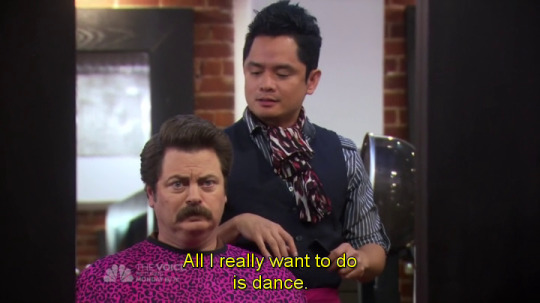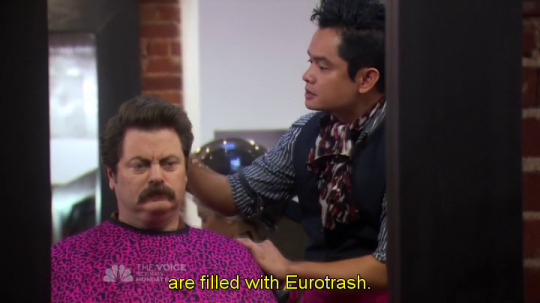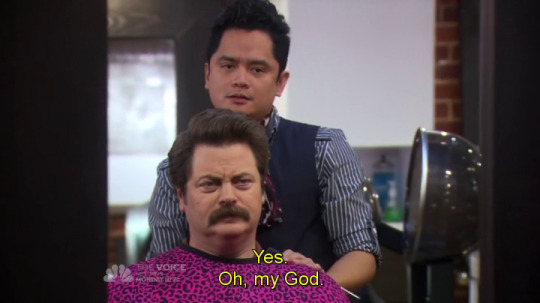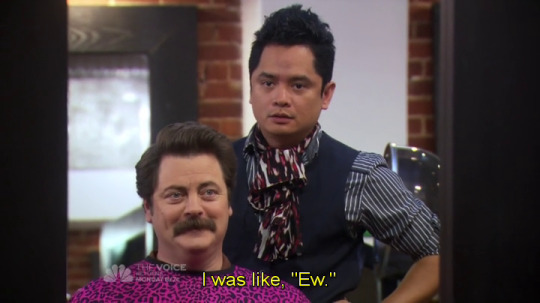Hi, I'm Katie! 22 years old and in college. This is how fandoms simultaneously make my life better and crazier, and anything else I find interesting.
Don't wanna be here? Send us removal request.
Photo



This Beautiful Planetarium Watch Puts the Solar System on Your Wrist
176K notes
·
View notes
Photo




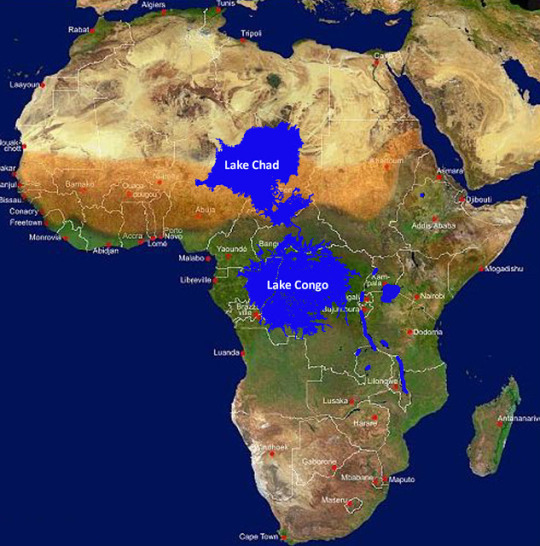


PROOF THAT AFRICANS WERE IN AMERICA BEFORE COLUMBUS!
Columbus Himself
According to renowned American historian and linguist Leo Weiner of Harvard University, one of the strongest pieces of evidence to support the fact that African people sailed to America before Christopher Columbus was a journal entry from Columbus himself. In Weiner’s book, “Africa and the Discovery of America,” he explains that Columbus noted in his journal that the Native Americans confirmed “dark brown” people had come from the south-east in boats, trading in gold-tipped spears.”
American Narcotics Discovered in Egyptian Mummies
The discovery of American narcotics in Egyptian mummies has left some historians amazed. Recently, archaeologists discovered the presence of narcotics only known to be derived from American plants in ancient Egyptian mummies. These substances included South American cocaine from Erythroxylon and nicotine from Nicotiana tabacum. German toxicologist Svetla Balabanova reported the findings, which suggest that such compounds made their way to Africa through trans-Atlantic trade that would predate Columbus’ arrival by thousands of years.
North America
For years, Eurocentric archaeologists have largely turned the other cheek when it came to the discovery of artifacts from ancient Egypt being discovered in the Americas. According to Dr. David Imhotep, the author behind the book “The First Americans Were Africans: Documented Evidence,” “Egyptian artifacts found across North America from the Algonquin writings on the East Coast to the artifacts and Egyptian place names in the Grand Canyon” are all signs of an early arrival in the Americas by Africans. This is also paired with a much earlier account of African people with incredible skills at sea. Back in 445 B.C., the Greek historian Herodotus wrote of King Ramses III leading a team of Africans at sea with astounding seafaring and navigational skills. Together, both accounts would point to Africans sailing over to the New World before Columbus.
Ancient Pyramids
Constructing pyramids was a highly specialized and complicated task that took the ancient Egyptians a lot of time to master. In ancient Egypt, there are signs of progression from the original stepped pyramid of Djoser to the more sophisticated pyramids that now stand at Giza. According to historians, it would be impossible for any group of people to have built those same complex pyramids without going through the same progression. Professor Everett Borders noted the presence of completed pyramids in La Venta in Mexico but the unusual absence of any earlier forms of the pyramids. According to Borders, it’s a sign that Africans, having already mastered the construction of pyramids in Egypt, sailed over to the New World and constructed these dual-purpose tombs and temples in the Americas.
Ancient African Skeletons Discovered in the New World
There have been many instances of archaeologists discovering skulls and skeletons that they believed clearly belonged to people of African descent. Polish professor Andrzej Wiercinski revealed the discovery of African skulls at Olmec sites in Tlatilco, Cerro de las Mesas and Monte Alban. Even more ancient African skeletons that would clearly predate Columbus’ arrival in the Americas were discovered throughout Central America and South America with some even being unearthed in what is now California.
A Clear Link in Religion
The similarities in Native American and African religions also suggest that Africans had to have had early contact with the Native Americans by sailing to the New World. Before Columbus stumbled upon the Native Americans’ land, there were prominent figures of deities with dark skin and coarse hair throughout their religion. Today, many surviving portraits reveal these deities who were clearly crafted in the likeness of Africans. Historians also point to wall paintings in caves in South America that depict the ancient Egyptian “opening of the mouth” and cross libation rituals.
The Accounts of Other European Explorers
Christopher Columbus wasn’t the only European explorer who made note of an African presence in the Americas upon his arrival. Historians revealed that at least a dozen other explorers, including Vasco Nunez de Balboa, also made record of seeing “Negroes” when they reached the New World. The accounts match up with the reports from the natives in Mexico. Nicholas Leon, an eminent Mexican authority, recorded the oral traditions of his people and ultimately kept track of a key piece of evidence that African people made it to the New World far before their European counterparts. His reports revealed accounts from natives saying “the oldest inhabitants of Mexico were African. [T]he existence of Africans and giants is commonly believed by nearly all the races of our sail and in their various language they had words to designate them.”
Africans Were Master Shipbuilders
Some people insist that Africans couldn’t have made it to the New World first simply because they didn’t have the skill and resources to sail across the Atlantic. As it turns out, that’s completely false. Historians have discovered evidence that suggests Africans were masters at building ships and that it was actually a part of their tradition. Shipbuilding and sailing are over 20,000 years old in the Sahara, and cave wall paintings of ancient ships were displayed in National Geographic magazine years ago. With those shipbuilding skills and the navigation skills that were noted by other historians of the time, the myth that Africans wouldn’t have been able to sail to the New World becomes officially debunked. As Dr. Julian Whitewright, a maritime archaeologist at the University of Southampton, explained, the voyage from Africa on ancient ships was “quite a plausible undertaking, based on the capabilities of the vessel of the period and historical material stating it took place.”
Gigantic Stone Heads in Central Mexico
The Olmec civilization was the first significant civilization in Mesoamerica and deemed “Mother Culture of Mexico” by some historians. This civilization dominated by Africans is best known for the colossal carved heads in Central Mexico that serve as even more evidence that Africans sailed to the New World before Columbus. The heads are clearly crafted in the likeness of Africans. The same civilization that created these giant heads was also responsible for introducing written language, arts, sophisticated astronomy and mathematics to Mesoamerican civilization, ancient African historian Professor Van Sertima explained.
A Long History of Trade by Sea
According to Paul Alfred Barton, the author of “A History of the African-Olmecs: African Civilizations of America from Prehistoric Times to the Present Era,” ancient kingdoms in West Africa have a long history of trade by sail, which made it all the more likely that they eventually expanded their trade to the Americas. While the Sahara is a dry desert today, its past as a lake-filled, wet and fertile place has been well-documented. African ships often crossed these large lakes to get from place to place and traded with other African civilizations along the way. After expanding their trade to the Americas, they certainly made their mark as things like African native cotton were soon being discovered all across North America.
https://www.youtube.com/watch?v=Hu0z6zyc2J8
7K notes
·
View notes
Note
I am working on developing a character who is a martial artist with background in ballet and gymnastics. Most of her fighting would be street-level, against gangs and stuff. But she's also very feminine and I'm kind of thinking dresses like a hipster. I know lots of films and comics portray female fighters in very impractical clothing. But what kind of feminine clothes could someone actually get away with wearing in a fight? Would a short skirt and leggings work? What about shoes and tops?
Well, here we go again.
Let’s start with the clothes because that’s the question we get lessfrequently. Most media presents women in combat as a sex object, and not inpractical gear. That, includes your suggestion above. You’re still talkingabout, “how can I make my character look good?” The best thing for yourcharacter would be the kind of clothing you’d wear while working in anindustrial environment, or something patterned off combat fatigues.
Heavy fabric that will take some scrapes and save you from a few cuts isworth far more than looking cute. You can save looking cute for a time whenpeople aren’t trying to turn you into people-paste.
Work boots or sneakers. Something that can get a firm grip on the ground.Work boots will provide a little more protection, so that’s a bonus. Steeltoed boots will protect against someone from stomping on her foot.
Long pants. Either jeans or work khakis are the best options. When it’s thedifference between bruising a knee and scraping it open in dirty water thatsome drunk was just puking into and fighting off a nasty infection, fashionloses out.
A work shirt or a leather jacket. Again, it won’t protect against the blowsshe’s taking, but it will provide a little protection. An insulatedjacket will make parrying unarmed strikes a little less unpleasant. Withoutone, you can easily end up with bruises along the leading edge of the arm, against the bone. Awinter coat will provide enough padding to save you from that. It’s not armor,but it does help.
Anything that dangles or flows, and won’t pull free if tugged, is aliability, and should be avoided. I don’t care how awesome your leather trenchcoat looks, if someone gets their hands on it you’re screwed. This includes skirts(both on long coats, dresses, and as an independent article) and ties. Policewear clip-ons for this specific reason. Giving your character a scarf becauseit looks cool is a terrible idea for a fighter.
Makeup is out. The last thing you need in a fight is one more thing to getin your eyes. Fighting, or any physical exertion, will make you sweat. Sweatingwill get your makeup running and into your eyes, blinding you.
Piercings and jewelry are another bad idea. Most piercings become potentialhandles for an opponent to latch onto and pull. Most of the time, these are buriedin soft, nerve-rich tissue, which will hurt like hell and bleed when torn.
Necklaces are another convenient handle, with a very inconvenient littlequestion. Will the necklace fail before your trachea? If the answer is yes,than it has the potential of being a distracting interlude while you strugglefor breath, and your attacker recovers theirs. If the answer is no, you just wrappedan improvised garrote around your neck.
Now, if a situation comes up, your character is wearing whatever they werewearing. But if they’re going out deliberately provoking a situation, then theyneed to be treating it seriously, and dress appropriately.
Also, fights will wreck your clothes. Most clothes, especially women’sfashion, aren’t designed to be durable. Thin fabric will snag and tear easily.So, if you’re putting your character in a skirt and leggings, expect those tobe in tatters after any serious abuse. Anyone who’s getting into combatregularly, especially if they dress frivolously, will find their wardrobegetting strained very quickly.
Which brings up a really serious question: if your character is going into adangerous situation where people will be trying to trying to seriously harm, orkill, her; why the hell would she care how sexy she looks?
No, seriously.
How botched are her priorities?
Looking cute is more important that living? What!?
Your character needs to prioritize her survival over the ego boost fromlooking good.
If you’ve never taken a psychology course, this will seem like a weird non-sequitur,but let’s talk about Maslow’s Hierarchy of Needs for a moment. This will helpyou set your character’s priorities.
There are five tiers of needs. Each one must to be provided for before youcan consider the one above it. You can’t skip one, and rush down the list towhere you want to be. If one of these fails, everything above it drops offuntil you can deal with it.
The lowest tier is Survival: food, water, sleep, things you cannot dowithout or you will die.
The second tier is Security: safety from imminent harm, not beingmurdered by crazed cultists, thugs, or in a writer’s arbitrary fit of pique.
The middle tier is Belonging: This can be summed up as: not beingalone in the world. Finding support from family, friends, or loved ones.
The fourth tier is Esteem: This is about finding acceptance in agroup beyond your immediate family, and having a place in the world. Findingvalue in yourself and from others.
The fifth, and highest, tier is Self-Actualization: this is the needfor intellectual or creative endeavors. I’d be doing it a disservice to call ithobbies, but to some extent, that’s the idea.
Here’s the thing. Dressing to look good, and feel good about yourself is Esteem.On its own, that’s fine. But, dealing with people who are trying to kill you isa Security issue. If your Security is threatened, it doesn’tmatter if you have family, self-esteem or a creative outlet. You willdie, if you don’t deal with that problem immediately.
There’s a legitimate possibility that can have a character whose prioritiesare completely scrambled. People like that exist. But, intrying to present a competent combatant, you need to set aside the idea thatyour character is dressing to feel good about themselves. They need to dressfor the job at hand. Or, as a writer, acknowledge that this is a characterflaw, and probably should be addressed in the text.
And, yes, being perceived as feminine is an esteem tier need. I’ll be backto this in a minute.
Ballet and Gymnastics will not make you a better fighter.
No. They won’t.
Either one can help with physical conditioning. And, as anyone who’s takenballet can tell you, it is a fantastic workout. But, it’s not going tohelp you fight.
They can help you become a better entertainer. So, if your character is aTV/Film stunt actor, cross training in either isn’t out of the question. But,as I just said, looking good is far less important than surviving a fight.
There’s an edge case, if your character is a prize fighter, then they are an entertainer. So training ineither could be helpful, because they will be evaluated on how good they lookin the ring in addition to their ability to fight.
Jean-Claude Van Damme is a good example of this. He’s a fantastic martialartist, and an entertainer. His ballet training helps make his techniques lookamazing, but it doesn’t make them more effective.
We’ve actually talked about this a lot, andnothing has really changed.
But, that’s not why you picked ballet and gymnastics. You chose them becauseyou wanted to affirm your character’s femininity. Why gymnastics is consideredfeminine is a mystery for another day. But, the idea is flawed; your characteris not automatically less feminine if she practices eskrima and parkour. In that case, she’d be far better prepared to deal with, and escape attackers.
You don’t need to remind us that your character is feminine constantly. No, seriously,don’t. It’s demeaning to say a character stops being feminine because shetreats as a combat serious threat. Women can fight. They just need to approachit seriously, just like everyone else.
Train to deal with people that mean you harm, or you mean to harm. Be preparedto kill them, or not, depending on your morals and ethics, not your gender.
When facing the risk of combat, dress for it. No, not a cute outfit (or a suitand tie, for that matter). Dress like you would if you were going to work in acombat zone or in an industrial facility. Clothing that won’t kill you if itgets caught in heavy machinery, and that won’t break the bank if it’sdestroyed. Clothes that will protect you from minor cuts and scrapes, becauseyou will be getting those without it.
It doesn’t make you less feminine. It just means you’re approaching asituation from the perspective of someone who can accurately assess the dangersaround them, and is prepared to deal with them. You know; competently.
Finally, and I really need to stress this, your femininity is less importantthan survival. You can clean up, look cute, and present yourself however youwant when you’re not facing physical threats.
-Starke
4K notes
·
View notes
Note
It's October 31st.... 🎃🎃🎃U know what that means?? YOU GUESSED IT! 👻👻 Today is SLUToween.💦💦 The last day of COCKtober.. 💦😫😭😭So dress like a ho 👯👯and eat ALL daddy's candy 😏😏😉😉🍬🍬 send to ♋️ of the bad ❌🚺girlz ready 4️⃣daddy this slutoween. If u get 1️⃣0️⃣ back you're the squishiest 😫one in town💦 If u don't send to all ♋️ Daddy will have to spank you!!😩😩👻
i really am a good person i don’t deserve this
466 notes
·
View notes
Photo

The largest snake fossil ever found is the Titanoboa. It lived over 60 million years ago and reached over 50 feet (over 15 meters) long. It weighed more than 20 people and ate crocodiles and giant tortoises.
7K notes
·
View notes
Conversation
Psychic buying clothes
Employee: How about this one?
Psychic: That shirt is too small
Employee: You didn't even try it on
Psychic: I'm a medium
364K notes
·
View notes
Text
Do you think Umbridge ever ran into Professor McGonagall while she was in her cat form and patted her head and McGonagall was like I will fucking claw your eyes out in your sleep
9K notes
·
View notes
Photo



Obviously Minerva McGonagall leaves most of her estate to Hogwarts. But I like to think that a week after Professor McGonagall dies, Hermione gets a box from the executor.
In it are all of McGonagall’s own schoolbooks, from when she was a girl.
And in spidery handwriting on a slip of parchment is a note: “For the cleverest witch of her age, from the cleverest witch of her own.”
Hermione is given dozens of awards and honors in her lifetime. But that bit of parchment is framed and hung in every office Hermione ever works in.
And all she ever says when asked about it is, “That was from a very dear friend.”
2K notes
·
View notes
Text
MINERVA MCGONAGALL HEADCANNON
Okay but picture this:
The children of all of McGonagall’s former students grow up spending Saturdays with Auntie Minerva at her cottage. They learn everything from basic transfiguration spells, to self defense, to plants, to manners, and hear stories of her younger days, of their parents, of things and lives and places that never cease to amaze the children. They grow up with this beautiful woman watching them flourish, and when they receive their Hogwarts letter- Auntie Minerva is the very first person they owl.
And then they all learn more and more at school, visiting and owling Auntie Minerva whenever they get the chance. They constantly update her on their latest achievements (”Dear Auntie, James just made quidditch captain!” “Dear Auntie, Rose just had her first kiss… with SCORPIUS!” or “Dear Auntie, I didn’t fail my Potions exam! Mum won’t have to kill me just yet! Now lets tackle Arithmancy… help me, God.”)
Auntie Minerva attends every quidditch match, every recital, every performance, never missing one special moment in her surrogate-grandchildrens’ lives. They have been family to her since the moment they were born, and just as her face was present at every baptism, it is now a comfort for each child at their graduation.
Auntie Minerva no longer just smiles- she glows with pride.
Then the first wedding comes- and oh, does she sob as the first of her little babies walks down the aisle. The ceremony is beautiful, but all Auntie Minerva can see is the pure happiness in the bride and groom’s eyes. She gives a toast at each and every wedding that brings everyone to tears and laughter. but the true story is in her eyes. She loves these children- yes, she will always see them as such- more than anything in the world.
The children all settle down with jobs that they have all consulted Auntie Minerva about- some as aurors, department of mysteries workers, professors- hell, Lily Potter even became the Transfiguration professor at Hogwarts because of her. The point is, the children have not forgotten her. They never will.
The children soon have children of their own, beautiful babies that Auntie Minerva falls in love with. The eyes so like their parents, smiles so like her grandchildrens’. Auntie Minerva remembers the children at this age, and oh, does it bring back memories.
The children still visit her every Saturday, and the family has only grown.
Auntie Minerva is older now though, and she aches. She knows her time is coming, but she holds on long enough for one last Saturday.
Auntie Minerva is found dead Sunday morning, her thin lips stretched into that same affectionate smile that the children remember so fondly. It is strange to see her in such a state, the lively and beautiful woman lying there so peacefully.
Unnatural, almost.
The sobs wrack the bodies- older ones, but still the same- of the children she had cared for. They are unable to process the loss that hits not just too close to home- it destroys the entire foundation.
The ministry and their respective employers gives them each three weeks off of work, but it is not enough.
The funeral is beautiful, held at Hogwarts. Not a soul remembers it though. They were all too stunned by the body of the woman they had lost. Auntie Minerva is dead, and there’s no spell to fix this.
The children raise their children on tales Auntie Minerva had told them, and teach them everything the woman had taught them. Yes, she is gone. But her legacy will never die.
And much like the wizarding world will forever remember the name of the boy who lived, they will never be able to erase from their hearts the name of the woman who endured. Who taught. Who loved. Who cared.
Rose Weasley and Scorpius Malfoy name their last girl Minerva, and the world ends all over again when they discover in her fifth year that her patronus and animagus are a lovely little tabby cat- spectacles and all.
And so the legacy continues on.
2K notes
·
View notes
Text
I love how making of Sense8 is actually much simpler than I thought.

258K notes
·
View notes
Text
hey guys, hope your skin is clear and you get a text from someone you like real soon.
also that your lunch tastes good, you find twenty dollars on the ground, and that thing coming up that you were dreading turns out not so bad
3M notes
·
View notes


